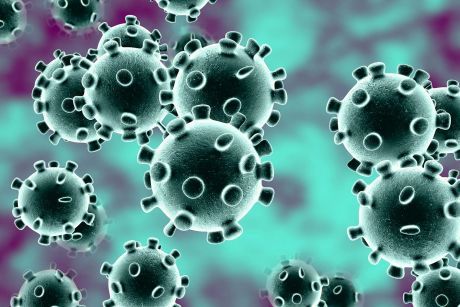Columns
You are here
Coronavirus, racism and capitalism

February 3, 2020
A 60-year-old man has needlessly died of heart failure in Sydney, Australia’s Chinatown. Witnesses say bystanders refused to apply CPR, for fear of coronavirus.
As with the SARS outbreak of 2003, the Chinese community is particularly hard hit. Businesses are suffering, workers are having their hours cut, and Asians are being denied services.
CTV reporter Peter Akman posted a photo of himself next to his Asian barber (the latter wearing a surgical mask) with the caption: “Hopefully ALL I got today was a haircut.” He has since lost his job.
In Toronto, a suburban restaurant is victim of a racist photo showing a woman eating a bat with chopsticks, and a slew of racist comments infect its web site. At a private high school in Toronto catering to Chinese students, teachers are refusing to work.
“I do give people the benefit of doubt because they’re scared, but why can’t they give me the benefit of doubt? Fear is no reason to be racist. Statistically, as a British citizen who hasn’t been to China in two years, I have the same risk level as a white person,” Dr. Zhou, a scientist told Britain’s Guardian, after encounåtering racist treatment.
The “bat soup” prank has gone viral, with racist claims that the virus is the result of lax Chinese hygiene. In France, the tabloid press is using the term “yellow peril”, or the headline “Alerte Jaune”.
Some facts:
As of this writing there are 3 confirmed cases of coronavirus in Canada; one of those has been released from hospital to recover in quarantine at home.
Worldwide, there have been almost 10,000 victims, with 213 confirmed dead.
This is a serious public health threat, and authorities are right to take serious precautions. But to put these numbers in context is not to minimize the risks – we are still in the disease’s early stages and those numbers could climb exponentially if health officials don’t take action.
According to the US Center for Disease Control, some 8.000 Americans have died this winter from the flu, many of those deaths being preventable if victims had their flu shot. Deaths are not just due to the virulence of the disease; many Americans cannot afford treatment.
Even in places with public health services, many workers succumb to flu – and spread it around – because they cannot afford to stay away from work to recover.
And far more people die from infectious diseases like measles (140,000 deaths in 2019) which had almost been eradicated. They are making major comebacks, thanks to a growing number if ill-informed parents refusing to have their children inoculated.
Obviously there is more at play with coronavirus than just concern about disease. Because this strain originates in a specific area in China and, like SARS before it, originated in livestock and spread to humans, latent racist attitudes are stoked.
There is a sense in which it is not accidental that coronavirus (and other dangerous potential pandemics) originate in China. It doesn’t have anything to do with cultural practices, hygiene or over-population. It has everything to do with China being on the cutting edge of massive, capitalist agri-business development.
Big business, big flu
Rob Wallace is a Marxist, an evolutionary biologist, and an expert on the links between capitalism, industrial agri-business and emerging diseases. He has written a sobering essay that demolishes the racist responses and puts the blame squarely on the drive for profit.
As Wallace points out, runaway development in China results in “humanity’s unprecedented connectivity”. What should be a boon for humanity becomes, under capitalism, a mortal threat. In China, air travel has increased eleven-fold just since SARS in 2003. In the same period the world has faced a parade of potential pandemics:
“This century we’ve already trainspotted novel strains of African swine fever, Campylobacter, Cryptosporidium, Cyclospora, Ebola, E. coli O157:H7, foot-and-mouth disease, hepatitis E, Listeria, Nipah virus, Q fever, Salmonella, Vibrio, Yersinia, Zika and variety of novel influenza A variants…”
What’s worse, nothing has been done to address the root cause: massive agri-business development on one hand, and poverty on the other. Health officials scramble after the facts, reacting once the latest pathogens are already on the loose, trying to minimize the damage.
In an era of austerity, public health is viewed through a dystopian lens: the isolation of Wuhan’s 11 million people is accompanied by their immiseration. Thousands of deaths are considered part of the price of doing business in the global trade in food.
So far we’ve been lucky – the flu and virus strains have so far only become communicable after their symptoms appear. But viruses evolve and mutate quickly and predictive models say it is just a matter of time before we see one that spreads before showing symptoms. Such a virus will make a mockery out of our “business-as-usual” public health measures.
Root cause
Cities like China’s Wuhan make perfect breeding grounds for new pathogens. There are traditional open-air markets existing along-side – and dialectically interacting with – immense capitalist livestock factories; and millions of workers crammed together, many in poverty and many with still-fresh connections with rurality.
Wallace’s prescription is nothing short of revolutionary: “I would recommend we err on the side of viewing disease causality and intervention beyond the biomedical or even ecohealth object and out into the field of ecosocial relationships.”
That means a revolution in how we produce what we eat, a revolution in how we relate to the planet. This goes far beyond lifestyle choices and consumerism. It means overthrowing a mode of production based on profit rather than the health and welfare of humanity and the planet.
Section:










